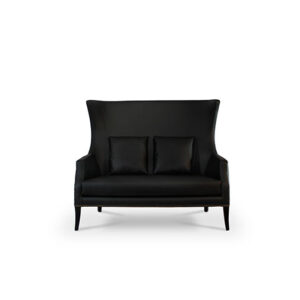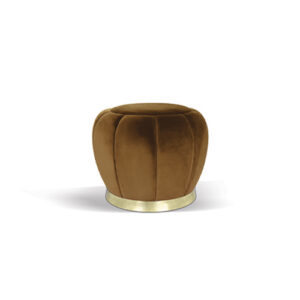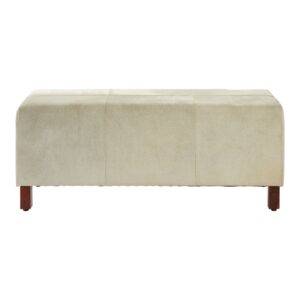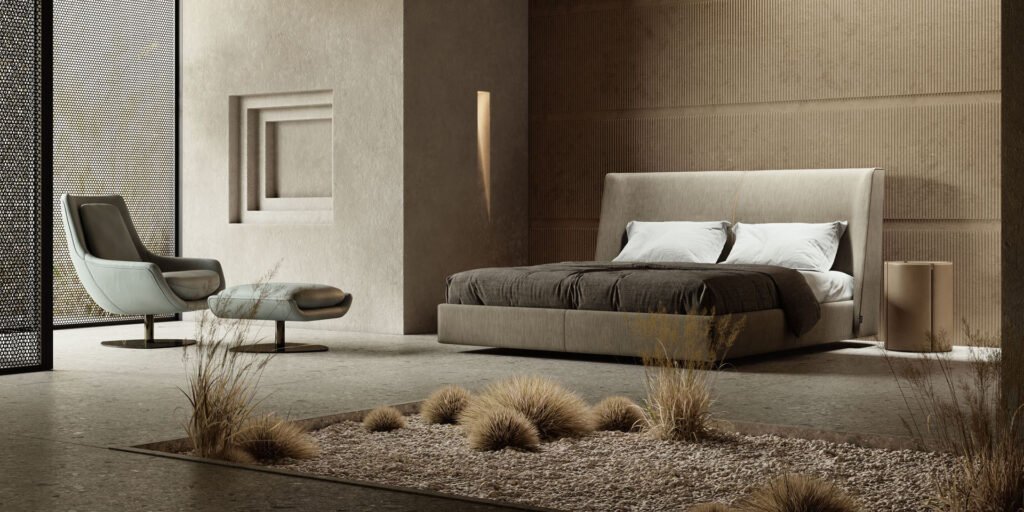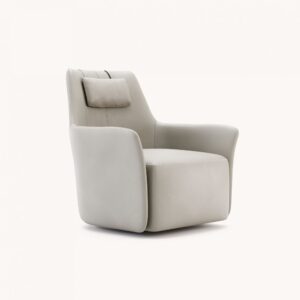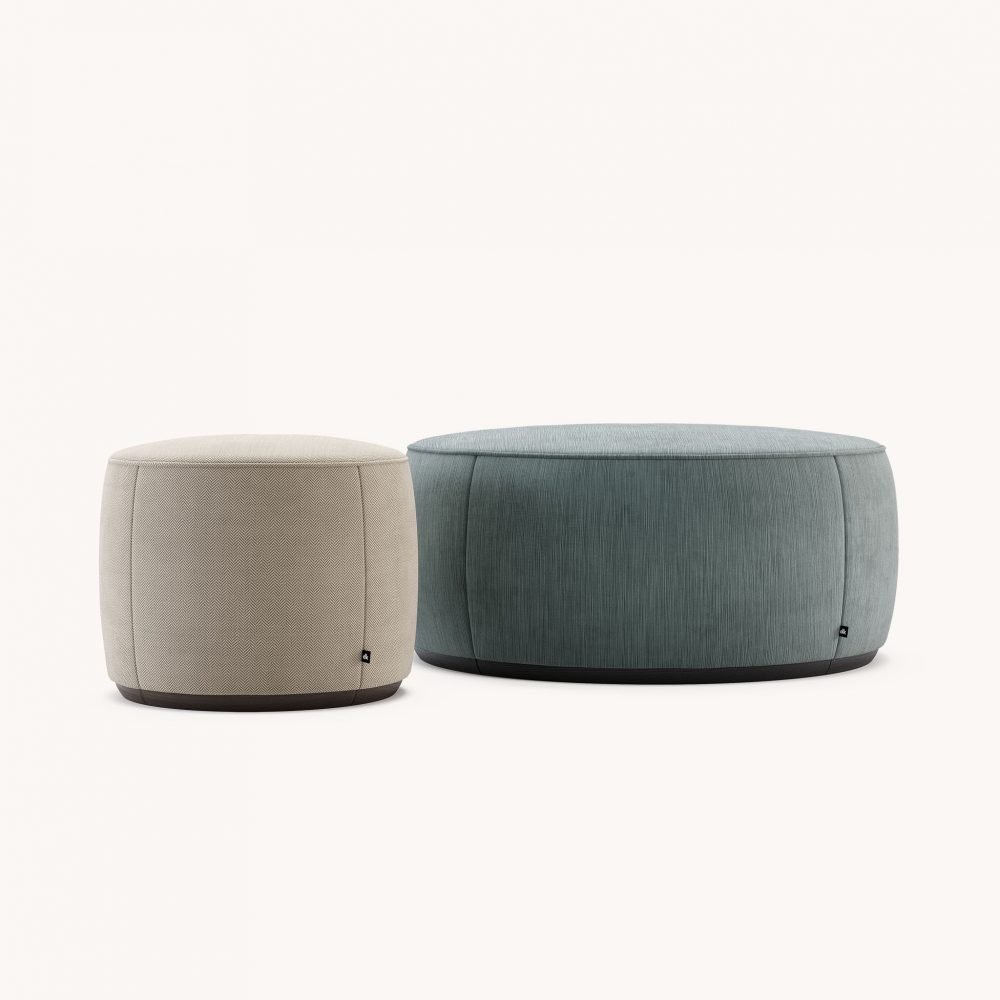Upholstery, the art of providing furniture with padding, springs, webbing, and fabric or leather covers, has been a vital craft since ancient times. From the luxurious thrones of emperors to the humble cushions of commoners, upholstery has played a crucial role in enhancing both the comfort and aesthetic appeal of furniture. At its core, upholstery serves to provide structural support, enhance comfort, and contribute to the visual appeal of furniture pieces. One of the most critical elements in upholstery is the stuffing material. These materials, often hidden beneath the surface fabric, determine not only the level of comfort but also the longevity and resilience of upholstered furniture. Understanding the various types of stuffing materials available is essential for both consumers and craftsmen alike, as it directly impacts the quality and performance of upholstered furniture.
The choice of stuffing material can significantly influence the overall comfort, durability, and aesthetic appeal of upholstered furniture. Different upholstery stuffing materials possess distinct characteristics, ranging from natural fibers like horsehair and cotton to modern synthetics like foam and polyester fiberfill. Each material offers unique properties in terms of support, resilience, breathability, and environmental impact. Furthermore, the selection of stuffing material can have practical implications, such as determining the firmness of seating cushions or the plushness of pillows. Whether refurbishing an antique armchair or selecting upholstery for a new sofa, knowing the characteristics and benefits of various stuffing materials empowers consumers to make informed decisions that align with their preferences, budget, and sustainability values. In this article, we embark on a comprehensive exploration of upholstery stuffing materials, delving into the rich history of traditional materials, examining the properties of modern alternatives, and considering the environmental implications of different choices. By shedding light on the diverse array of stuffing materials available, we aim to equip readers with the knowledge and insight necessary to navigate the world of upholstery with confidence and discernment.
-

Brabbu
DUKONO 2 SEAT SOFA
£5,026 – £7,901 Select options This product has multiple variants. The options may be chosen on the product page -

Brabbu
FLORENCE STOOL
£1,748 – £2,024 Select options This product has multiple variants. The options may be chosen on the product page -

North West
Kensington Townhouse With Wood Legs
£720 Add to cart
Historical Perspective on Upholstery
The practice of stuffing upholstery dates back millennia, originating from the need for enhanced comfort and support in seating and bedding. In ancient civilizations such as Egypt, Mesopotamia, and China, rudimentary forms of upholstery emerged as early as 3000 BCE. Initially, simple materials like reeds, grasses, and animal hides were employed to create rudimentary padding for seating surfaces and bedding, primarily serving functional rather than aesthetic purposes. As societies advanced, so too did the sophistication of upholstery materials. In ancient Rome, for instance, wealthy citizens adorned their furniture with lavish fabrics and stuffing materials, such as wool, hay, and feathers, to signify status and luxury. The use of stuffing materials became synonymous with comfort and opulence, transforming humble seating arrangements into symbols of affluence and refinement.
Throughout the Middle Ages and into the Renaissance period, upholstery continued to evolve, driven by advancements in craftsmanship and design. European artisans experimented with new stuffing materials, including horsehair, moss, and straw, to achieve varying levels of comfort and support in furniture construction. The burgeoning trade routes of the time facilitated the exchange of ideas and materials, leading to the adoption of exotic stuffing materials such as silk and down feathers from distant lands. The Industrial Revolution marked a significant turning point in the history of upholstery stuffing materials. With the advent of mechanized production techniques and the proliferation of textile manufacturing, new materials such as cotton batting and coiled springs revolutionized furniture construction. These innovations not only enhanced the comfort and durability of upholstered furniture, but also democratized access to quality seating, making comfortable furnishings more accessible to the masses.
As the 20th century dawned, the emergence of synthetic materials further transformed the landscape of upholstery stuffing. Polyurethane foam, invented in the 1930s, revolutionized furniture design with its lightweight, resilient, and moldable properties. Foam quickly supplanted traditional stuffing materials in many applications, offering unparalleled comfort and versatility while enabling innovative furniture designs previously unattainable with natural materials alone.
In recent decades, growing concerns about environmental sustainability and health have spurred a resurgence of interest in natural and eco-friendly stuffing materials. Materials such as organic cotton, natural latex, and recycled fibers have gained popularity among consumers seeking alternatives to petroleum-based foams and synthetic fillers. This shift reflects a broader societal awareness of the ecological impact of consumer choices and a desire for more responsible and sustainable practices in furniture manufacturing.
Types of Upholstery Stuffing Materials
Natural Materials
Natural materials have been used for upholstery stuffing for centuries, offering a combination of comfort, resilience, and eco-friendliness. Here are some common natural materials used for upholstery stuffing:
- Horsehair: Horsehair, as the name suggests, is derived from the tail and mane of horses. Horsehair is obtained through a process of grooming horses, where the shed tail and mane hairs are collected, cleaned, and sorted. The hairs are then washed and sterilized to remove dirt and debris before being processed into upholstery stuffing material.
One of the most notable characteristics of horsehair is its natural springiness and resilience. Unlike other stuffing materials, horsehair has the ability to retain its shape and supportiveness over time, making it ideal for use in upholstery where durability is paramount. Additionally, horsehair is known for its ability to provide firm yet comfortable support, creating seating surfaces that maintain their integrity even after years of use.
Horsehair is also an exceptionally durable and long-lasting upholstery stuffing material, making it an excellent choice for high-use furniture pieces such as sofas and armchairs. Its natural springiness allows horsehair to maintain its shape and supportiveness over time, providing consistent comfort and performance. Additionally, horsehair’s breathability facilitates airflow within upholstery cushions, reducing the likelihood of moisture buildup and mold growth. Beyond its practical advantages, horsehair upholstery exudes a sense of tradition and craftsmanship, lending a timeless elegance to furniture pieces.
On the downside, horsehair can be relatively expensive compared to synthetic stuffing materials, primarily due to the labor-intensive process of collecting and processing the hairs. Its availability may also be limited, especially in certain regions, as natural horsehair is sourced from grooming practices rather than farming. - Cotton: Cotton is a natural fiber derived from the seedpods of the cotton plant (Gossypium). It has been a staple in textile production for centuries, valued for its softness, breathability, and versatility. In upholstery, cotton batting is commonly used as a stuffing material for cushions, padding, and quilting layers.
Cotton batting is known for its soft, lightweight texture, making it ideal for creating plush and comfortable seating surfaces. Its natural breathability allows air to circulate, preventing moisture buildup and promoting a comfortable seating experience. Additionally, cotton batting is hypoallergenic, making it suitable for individuals with sensitivities to synthetic materials. The ability of cotton batting to conform to the contours of furniture allows for customized comfort, molding to the shape of the body for a cozy seating experience. Cotton batting is also easy to work with, making it suitable for a variety of upholstery projects, from simple cushion re-coverings to intricate tufted designs.
However, cotton batting is not without its drawbacks. Over time, it may compress and lose its loft, resulting in diminished support and comfort. Regular fluffing and maintenance may be necessary to restore its plushness and resilience. Additionally, while cotton batting is durable, it may not be as long-lasting as some other stuffing materials, particularly in high-use furniture pieces. Its natural composition also makes it more prone to attracting dust and debris, requiring more frequent cleaning and upkeep compared to synthetic alternatives. - Wool: Wool, a natural fiber derived from the fleece of sheep, is renowned for its versatility and myriad applications, including upholstery stuffing. Sourced from sheep breeds specially bred for their wool, this renewable resource offers a host of unique characteristics that make it an attractive option for upholsterers seeking comfort, durability, and sustainability.
Wool serves as an excellent stuffing material due to its inherent resilience, moisture-wicking properties, and natural flame resistance. Unlike synthetic materials, wool possesses a crimped structure that enables it to spring back into shape, providing consistent support and preventing sagging over time. This natural resilience ensures that upholstered furniture maintains its form and comfort, even after years of use.
One of the most notable characteristics of wool is its exceptional moisture-wicking ability. Wool fibers can absorb up to 30% of their weight in moisture without feeling damp, making them ideal for upholstery in environments prone to humidity or moisture buildup. This moisture-wicking property helps regulate body temperature, keeping occupants cool in summer and warm in winter, thus enhancing overall comfort.
Furthermore, wool is naturally flame-resistant, making it a safer choice for upholstered furniture. Unlike synthetic materials that may melt or emit toxic fumes when exposed to fire, wool has a high ignition point and self-extinguishes when the flame source is removed. This inherent fire resistance adds an extra layer of safety to upholstered items, particularly in residential and commercial settings where fire hazards may be a concern.
Despite its many benefits, wool may have some drawbacks as an upholstery stuffing material. It can be more expensive than synthetic alternatives, potentially increasing the cost of upholstered furniture. Additionally, wool requires special care and cleaning methods to prevent felting, shrinkage, and matting of fibers. Its natural odor may also be a concern for some individuals, although proper ventilation and cleaning can mitigate this issue. - Coir: It is derived from the fibrous husk of coconuts, is a natural material with unique characteristics that make it suitable for various applications, including stuffing upholstery. Harvested from the outer layer of coconut shells, coir is processed into fibers and then woven or compressed into mats, sheets, or loose fill for use in upholstery and other industries.
In upholstery, coir serves primarily as a padding material, providing firm support and structure to furniture pieces. Its inherent resilience and durability make it well-suited for applications where firmness and shape retention are desired. Coir fibers are naturally resistant to moisture, mold, and pests, making them particularly suitable for outdoor furniture or humid environments where traditional stuffing materials may degrade over time.
One of the key advantages of coir is its firmness and ability to maintain its shape under pressure, making it an excellent choice for upholstery applications where support and longevity are paramount. Unlike softer materials like cotton or feathers, coir provides a more stable and supportive foundation for cushions and seating surfaces, helping to prevent sagging and maintain proper posture.
However, coir’s firm texture may also be considered a drawback for some individuals, especially those seeking plush or cushiony upholstery. While it provides excellent support, it may lack the softness and comfort desired in seating and bedding applications. To address this limitation, coir is often used in combination with softer materials like cotton or foam to achieve a balance of support and comfort.
Another potential downside of coir is its rough texture, which may be abrasive to sensitive skin or delicate fabrics. This can be mitigated through the use of cushioning layers or fabric covers, but it’s worth considering when selecting upholstery materials. Additionally, coir may require additional padding or quilting to achieve the desired level of comfort, especially in applications where direct contact with the body is expected. In summary, careful consideration should be given to its use in conjunction with other materials to achieve the desired comfort and aesthetics.
Synthetic Materials
Synthetic upholstery stuffing materials offer a range of advantages that complement and enhance the properties of natural materials. In the context of upholstery stuffing, synthetic materials refer to man-made substances derived from chemical compounds rather than natural sources such as plants or animals. These materials are engineered to replicate or improve upon the characteristics of natural fibers and fillers, providing innovative solutions for comfort, durability, and sustainability in furniture construction.
One of the primary needs for synthetic materials in upholstery is their ability to offer consistent performance and quality. Unlike natural materials, which can vary in texture, density, and resilience depending on factors such as harvest conditions or animal breed, synthetic materials are manufactured under controlled conditions, ensuring uniformity and reliability in their properties. This consistency allows manufacturers to produce upholstery products with predictable comfort and support characteristics, meeting the demands of consumers for reliable and long-lasting furniture.
Moreover, synthetic materials offer versatility and customization options that may not be achievable with natural materials alone. By manipulating the composition and structure of synthetic fibers and fillers, manufacturers can tailor the firmness, loft, and resilience of upholstery stuffing to suit specific applications and user preferences. This flexibility enables the creation of innovative furniture designs and seating solutions that prioritize comfort, ergonomics, and aesthetic appeal.
Additionally, synthetic materials often possess inherent properties that enhance their performance in upholstery applications. Whether used independently or in combination with natural materials, synthetic fillers and fibers offer innovative solutions that meet the evolving needs and preferences of consumers and manufacturers in the furniture industry.
-

Domkapa
Alexander Armchair/Ottoman
£1,031 – £3,954 Select options This product has multiple variants. The options may be chosen on the product page -

North West
Azalea Black Fabric Chair
£592 Add to cart -

Domkapa
Camille Bar & Counter Chair
£1,251 – £2,430 Select options This product has multiple variants. The options may be chosen on the product page
Some common synthetic materials include:
- Foam: Foam is a versatile material widely used in upholstery, is derived from petrochemicals through a process of polymerization. It consists of tiny bubbles or cells that are dispersed throughout the material, giving it a lightweight and resilient structure. One of the most common types of foam used in upholstery is polyurethane foam, which can be produced in various densities and firmness levels to suit different applications.
Foam offers exceptional comfort and support, molding to the contours of the body to provide customized cushioning. Unlike traditional stuffing materials such as horsehair or cotton, foam maintains its shape and resilience over time, reducing the need for frequent fluffing or re-stuffing. Additionally, foam is lightweight and easy to work with, allowing for precise shaping and detailing in furniture construction.
One of the primary advantages of foam is its versatility. It can be manufactured in a wide range of densities and firmness levels, from soft and plush to firm and supportive, to accommodate various seating preferences and furniture designs. This flexibility makes foam suitable for a diverse array of upholstery applications, from seat cushions and mattresses to padding and insulation layers.
Furthermore, foam is hypoallergenic and resistant to mold, mildew, and dust mites, making it an ideal choice for individuals with allergies or respiratory sensitivities. Its synthetic composition also makes it inherently flame-retardant, meeting safety standards for furniture upholstery.
One of the main concerns in using foam is its environmental impact. The production of foam involves the use of petrochemicals, which are derived from non-renewable resources and contribute to carbon emissions and pollution. Additionally, foam is not biodegradable and can persist in landfills for hundreds of years, posing long-term environmental challenges. Some individuals may find foam to be less breathable than natural stuffing materials, leading to heat retention and discomfort, particularly in warmer climates. Foam also has a finite lifespan and may degrade over time with prolonged use, resulting in sagging or deterioration of cushioning properties. - Polyester fiberfill: It is derived from polyester fibers, which are made from petroleum-based chemicals. These fibers are processed and spun into a fluffy, lightweight material that resembles natural cotton batting or down feathers.
One of the primary characteristics of polyester fiberfill is its loftiness and resilience. Like foam and unlike natural materials like cotton or wool, polyester fiberfill maintains its shape and loft over time. This makes it ideal for filling cushions, pillows, and upholstery where a plush, voluminous appearance is desired.
Another advantage of polyester fiberfill is its hypoallergenic properties. When compared to natural materials such as feathers or wool, polyester fiberfill is less likely to trigger allergic reactions in sensitive individuals. It is also resistant to mold, mildew, and pests, making it a durable and hygienic choice for upholstery stuffing. As a synthetic material, it is mass-produced and readily available in a variety of grades and densities to suit different upholstery needs. It is often more cost-effective than natural materials, making it a popular choice for budget-conscious consumers.
Like foam, polyester fiberfill is not biodegradable and contributes to plastic pollution when disposed of improperly. Additionally, it has a great tendency to retain heat. It does not breathe as well as natural materials and can trap body heat, leading to discomfort, especially in warm climates.
Specialty materials used in upholstery offer unique characteristics tailored to specific comfort and performance needs. Down and feathers, prized for their luxurious softness and loft, provide plush cushioning that conforms to the body for customized comfort. Latex foam, derived from the sap of rubber trees, offers exceptional resilience and durability, retaining its shape and supportiveness over time. It is also hypoallergenic and resistant to mold, mildew, and dust mites, making it a preferred choice for individuals with allergies. Gel-infused foam, a type of memory foam infused with cooling gel particles, provides the contouring and pressure-relieving benefits of memory foam while enhancing temperature regulation, dissipating heat, and keeping users cool and comfortable. Buckwheat hulls, lightweight and breathable, offer natural ventilation and airflow, preventing heat buildup and promoting comfort. They provide firm support and can be adjusted to desired firmness, making them suitable for individuals seeking a more customized seating experience. These specialty materials not only offer enhanced comfort and performance but also cater to health, environmental, and aesthetic considerations, providing a diverse range of options for upholstered furniture.
Choosing the Right Upholstery Stuffing Material
Choosing the right material for upholstery is a significant decision that profoundly influences the comfort, durability, and overall satisfaction with your furniture. To navigate this selection process effectively, several key factors should be considered. Firstly, it’s essential to assess your comfort needs. Consider whether you prefer a firm, supportive feel or plush, sink-in cushioning. Materials like latex foam and coir offer firm support, while down and feathers provide luxurious softness. Tailoring your choice to your personal comfort preferences ensures a seating experience that meets your needs and preferences.
Durability is another critical consideration. Evaluate the durability of different upholstery materials based on factors such as usage frequency, expected wear and tear, and the presence of pets or children in the household. Natural materials like horsehair and wool are known for their durability and resilience, while synthetic materials like polyester fiberfill and foam offer long-lasting performance with minimal maintenance.
Maintenance requirements should also be factored in. Natural materials like cotton and wool may require more frequent cleaning and care to prevent shrinkage and maintain their appearance. Synthetic materials like polyester fiberfill and foam are typically easier to clean and maintain, as they are resistant to stains and moisture. Considering your lifestyle and willingness to invest time and effort into maintenance will help you choose a material that fits your needs.
Budget considerations play a significant role in material selection. Determine your budget for upholstery materials and factor in the cost of both the material itself and any additional expenses, such as professional upholstery services. Natural materials like horsehair and down feathers tend to be more expensive than synthetic alternatives like polyester fiberfill and foam, so weigh the cost against the desired quality and performance.
Allergies and sensitivities should be taken into account as well. If you or your family members have allergies or sensitivities, consider choosing hypoallergenic materials like latex foam or synthetic fibers. These materials are less likely to harbor allergens such as dust mites, mold, and pet dander, making them a safer choice for allergy sufferers.
Finally, it’s beneficial to test samples of different upholstery materials whenever possible to evaluate their feel, support, and overall suitability for your furniture project. Additionally, seeking advice from upholstery professionals or interior designers can offer valuable insights based on their experience and expertise.
In conclusion, when it comes to upholstery, the choice of materials plays a pivotal role in determining the comfort, durability, and overall quality of the finished product. By considering a variety of factors such as comfort preferences, durability needs, maintenance requirements, allergies, environmental impact, and budget constraints, individuals can make informed decisions that align with their specific needs and values. Whether opting for traditional natural materials like horsehair and wool or embracing modern synthetic alternatives like polyester fiberfill and foam, each material offers unique benefits and considerations. Therefore, it is important to explore the diverse array of materials available and carefully weigh the options so you can create upholstered furniture that not only meets your functional and aesthetic requirements but also reflects your commitment to comfort, sustainability, and quality craftsmanship.


